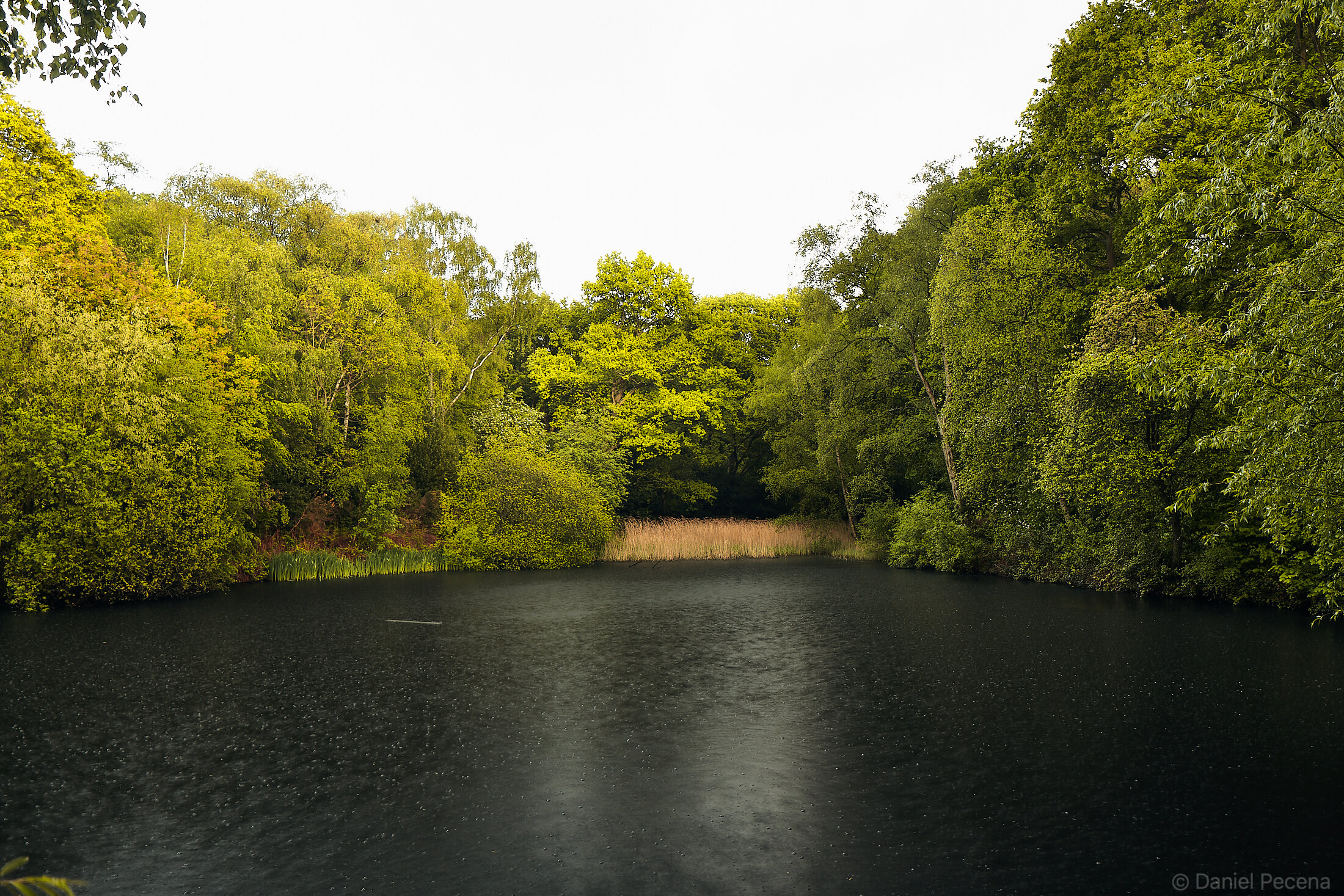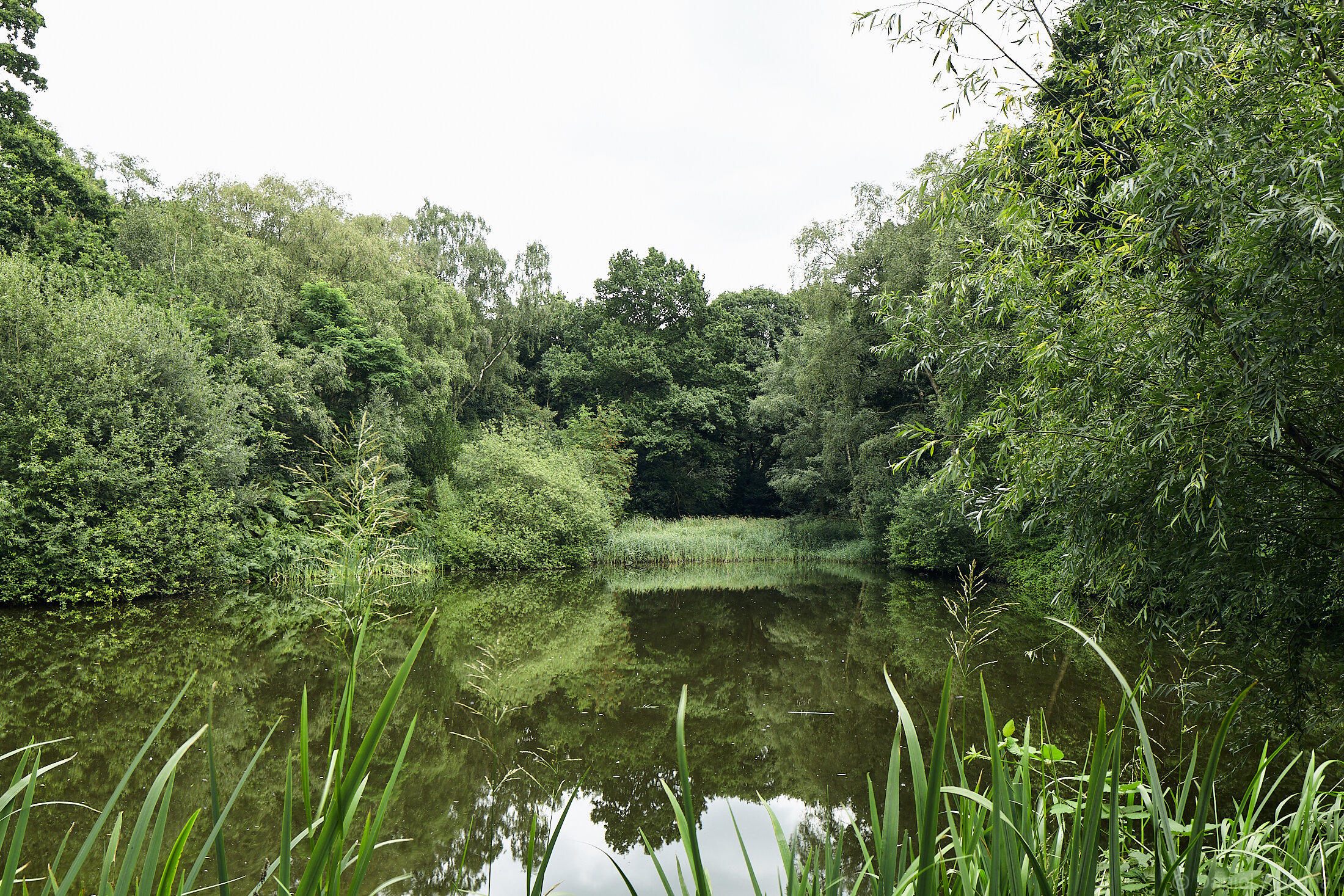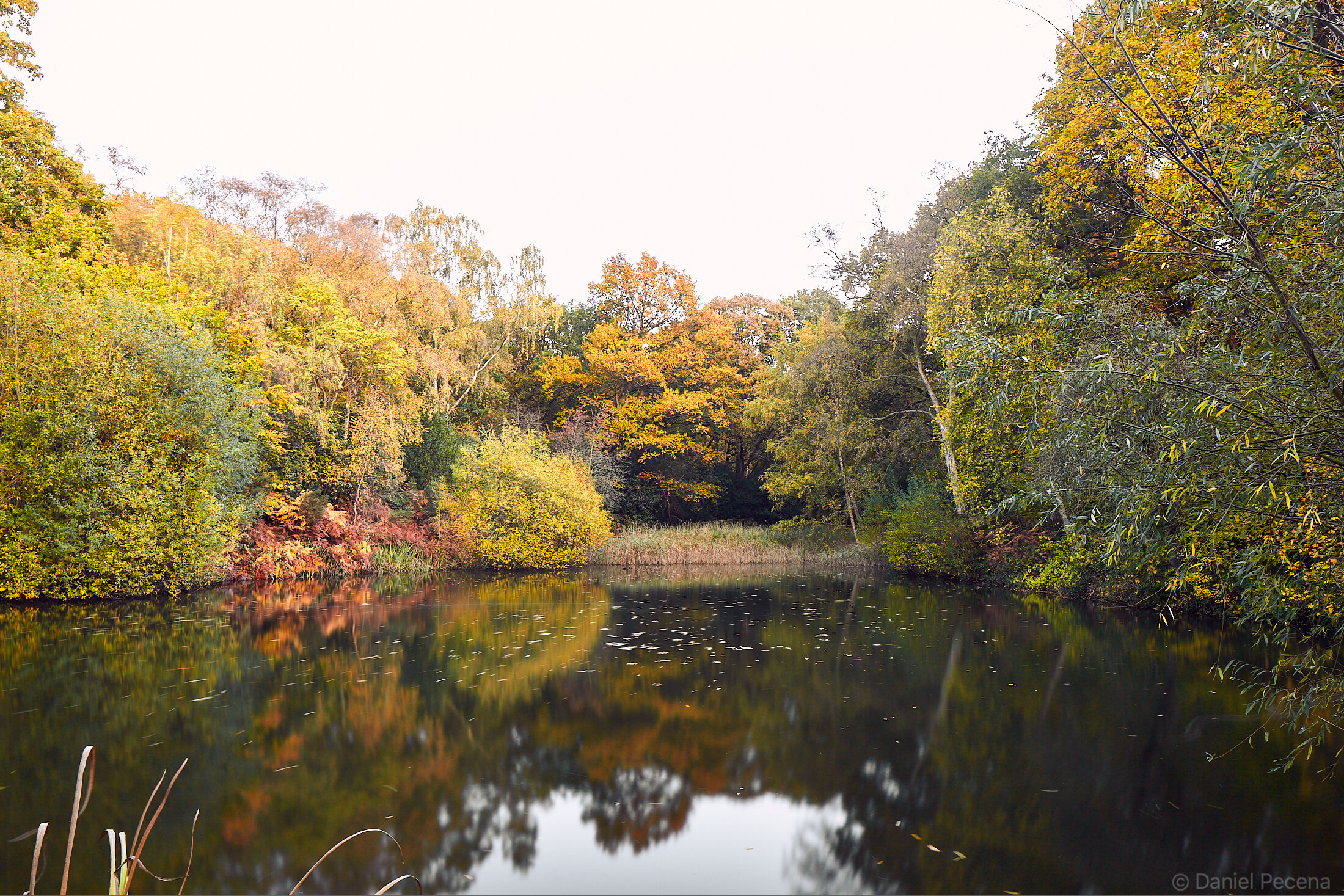Hampstead Heath in north-west London is an expansive area of woodland, open fields and fresh air. It contains 18 ponds that are scattered across the Heath. I have chosen one of these ponds and its surroundings to illustrate the ideas of seasonal changes, growth, decay and regeneration as part of a natural cycle.
First recorded mention of Heath comes in 986 when English king Æthelred II. granted one of his servants five hides of land (hide was an English unit of land measurement originally intended to represent the amount of land sufficient to support a household). Although the land had been in private hands for hundreds of years large parts of it have acted as “green lungs of the metropolis” and remained common land serving to public recreation or for livestock grazing.
The idea for ponds came in late 16th century during the reign of Henry VIII. The springs of Hampstead Heath were leased to William Paterson & Partners, who formed the Hampstead Water Company and built reservoirs which supplied water to London. These reservoirs later became bathing ponds. The area with its expansive vistas, natural and man-made beauty has always been popular with artists. Poets (e.g. John Keats), painters (John Constable), and writers (C.S.Lewis) all found inspiration here. When the Hampstead Junction railway opened in 1860 it brought many other people escaping city for roaming in near natural surroundings, especially at weekends (it is estimated that in 1865 up to 50,000 people visited Hampstead Heath at Easter). Later on it hosted bank holiday fairs, donkey rides with people fishing in the ponds or even ice skating in cold winters. To this day there are famous pubs on or next to Heath like for example Spaniards Inn (built in 1585) Old Bull and Bush (1730) or Garden Gate (1855) frequented by notable people of history.
The Leg of Mutton pond is a small body of water in West Heath named most likely for its shape. This pond was built in 1816 by damming of a chalybeate brook Brent (mineral spring water containing salts of iron). This work was commissioned as part of a relief plan to employ the poor after Napoleonic wars. West Heath and in particular The Leg of Mutton pond area was also identified as an important Mesolithic site. Excavations were being carried out here in 1976-1981 and again in 1984-1986. Myfanwy Stewart from Institute of Archaeology writes in the report Burnt stone in West Heath, Hampstead (PIA No.1 1990) that “low pH factor prevents the survival of bone. In the almost total absence of organic remains, burnt stone was the only recoverable material available in quantity for providing possible behavioural evidence to support spatial analysis of the 100,000 or more struck flakes that have now been found”. Due to ecotone created on the London clay and Bagshot sands Mesolithic people would have found here a favourable environment with supply of fresh water.
Today this area of woodland is populated by many more trees then when the Leg of Mutton pond was created. It is very popular with walkers any time of the year and in warmer months serves also as gay cruising place. Some people forage for blackberries at the end of summer as well. Wildfowl, seagull, dragonfly, kingfisher, grass snake and bat can be seen in and around the ponds.
More than two hundred years has passed since the creation of the pond and although it is man-made its look doesn’t betray it first hand. I have visited this spot countless times throughout this year and every time it may be slightly different due to different natural circumstances like growth, decay, weather and light. Changes in seasons are obvious guides I pay attention to on the way throughout the year; returning to this spot, I have created my landmark in time.







